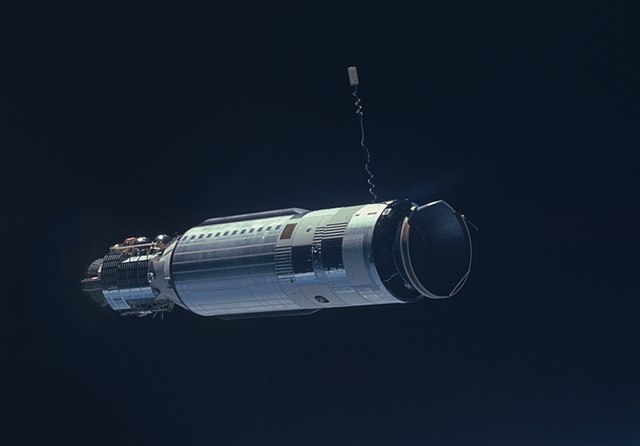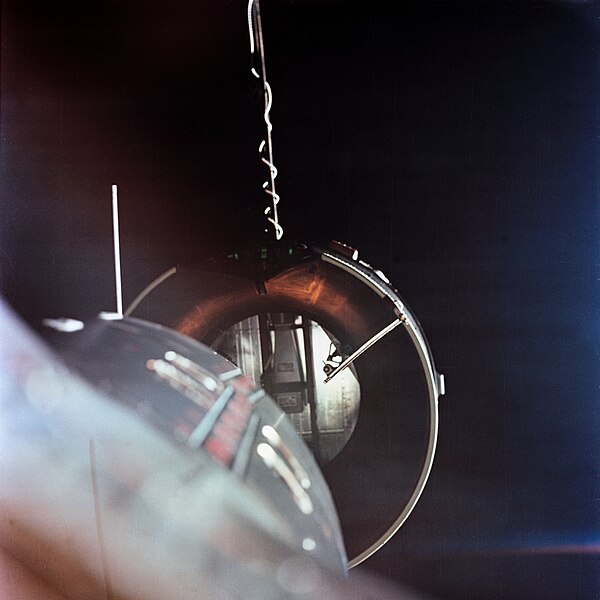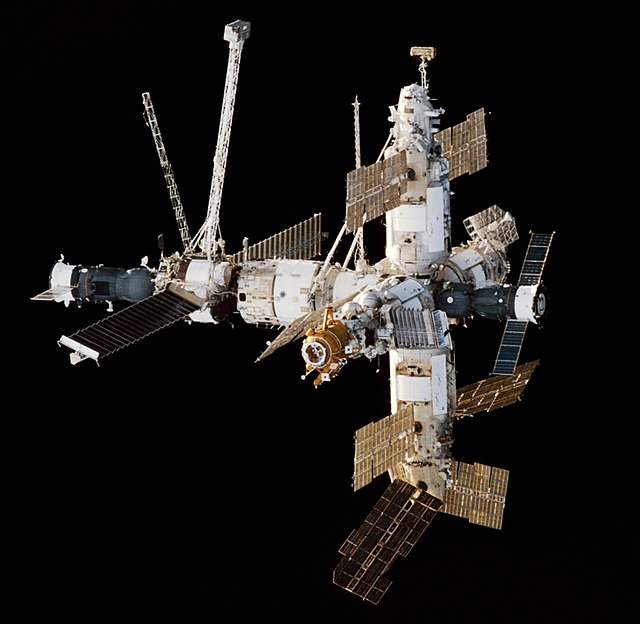Salyut 1 (DOS-1) was the world's first space station launched into low Earth orbit by the Soviet Union on April 19, 1971. The Salyut program followed this with five more successful launches of seven more stations. The final module of the program, Zvezda (DOS-8), became the core of the Russian segment of the International Space Station and remains in orbit.
Salyut 1 as seen from the departing Soyuz 11
Still frame from an animation of Salyut 1 with attached Soyuz.
The Soyuz 11 crew with the Salyut station in the background, in a Soviet commemorative stamp
A space station is a spacecraft capable of supporting a human crew in outer space for an extended period of time and is therefore a type of space habitat. It lacks major propulsion or landing systems. An orbital station or an orbital space station is an artificial satellite. Stations must have docking ports to allow other spacecraft to dock to transfer crew and supplies. The purpose of maintaining an orbital outpost varies depending on the program. Space stations have most often been launched for scientific purposes, but military launches have also occurred.
Gemini 8 Agena target vehicle
Gemini 8 docking with the Agena in March 1966
The U.S. Skylab station of the 1970s
Mir station seen in 1998







